Significance
In 1945, the Chinese government took control of Taiwan after Japan’s retrocession and most Shinto shrines across Taiwan were dismantled or turned into war memorials due to anti-Japanese sentiment. The Taoyuan Martyr’s Shrine and Tongsiao Shinto Shrine are the only two well-preserved Shinto shrines in Northern Taiwan. A swallow-tail roof, an element of traditional Minnan (Southern Chinese) architecture, as well as the emblem of the Chinese National Party that can be seen above its hall of worship were added to Tongsiao Shinto Shrine during renovations, illustrating the historical development of Taiwan during the post-war era. In addition to the shrine, a Russo-Japanese War Memorial sits on the mountaintop, making it a site of rich historical significance and learning.
History
Under the Treaty of Shimonoseki, signed at the end of the First Sino-Japanese War (1894), Taiwan was officially ceded to Japan. Upon his arrival in Taipei, Prince Kitashirakawa Yoshihisa led the Japanese Imperial Guard southward through the island. After they made a stop in Tongsiao, the local people built a memorial to their arrival and temporary stay, which later prompted the construction of the Shinto shrine. The shrine was completed in 1937, and enshrined Amaterasu (the solar goddess) and Prince Kitashirakawa Yoshihisa. In 1947, two years after the Chinese government recovered Taiwan from the Japanese, the shrine’s hall of worship was renovated and converted into a soldier’s memorial. The renovation saw the addition of a swallow-tail roof and the emblem of the ruling Chinese Nationalist Party. Since the enshrined Shinto deities and prince were replaced with Zheng Chenggong (a Chinese general in Taiwan from the late Ming and early Qing Dynasties) and other martyrs to the Chinese cause, the local people also called the shrine Zheng Chenggong Temple. As a Shinto shrine incorporating both Chinese and Japanese architecture, Tongsiao Shinto Shrine was designated a historical site in Miaoli County in 2002.
Special Features

1The Layout Tongsiao Shinto Shrine consists of a visitor center, an office, two torii (traditional Japanese entrance gates), a sandō (entrance path), stone lanterns, the haiden (hall of worship), the hall of offerings, and the main shrine surrounded by a tamagaki (fence used to surround a sacred place). The main shrine, the hall of offerings, and the hall of worship were all built in the Shinmei-zukuri style, an architectural style commonly used in ancient Japanese shrines. The main shrine and the hall of offerings have been dismantled, leaving only their foundations. The roof of the preserved hall of worship was rebuilt as a swallow-tail roof in the Minnan architectural style. The stone lanterns standing along the sides of the entrance path in front of the hall consist of both originals that have been preserved and replicas that were made after the originals were destroyed. Originally, the Japanese characters for “Shōwa” (a Japanese Emperor) were carved on the stone lanterns and the columns of the torii (gates). Despite the removal of those characters and renovations done in Chinese architectural style, it is evident that the structures once comprised a Japanese Shinto shrine.
Tongsiao Shinto Shrine consists of a visitor center, an office, two torii (traditional Japanese entrance gates), a sandō (entrance path), stone lanterns, the haiden (hall of worship), the hall of offerings, and the main shrine surrounded by a tamagaki (fence used to surround a sacred place). The main shrine, the hall of offerings, and the hall of worship were all built in the Shinmei-zukuri style, an architectural style commonly used in ancient Japanese shrines. The main shrine and the hall of offerings have been dismantled, leaving only their foundations. The roof of the preserved hall of worship was rebuilt as a swallow-tail roof in the Minnan architectural style. The stone lanterns standing along the sides of the entrance path in front of the hall consist of both originals that have been preserved and replicas that were made after the originals were destroyed. Originally, the Japanese characters for “Shōwa” (a Japanese Emperor) were carved on the stone lanterns and the columns of the torii (gates). Despite the removal of those characters and renovations done in Chinese architectural style, it is evident that the structures once comprised a Japanese Shinto shrine.
2The Haiden (Hall of Worship)Among the main structures of the shrine, the haiden, or hall of worship, is the best-preserved. It was converted into the Tongsiao Martyr’s Shrine following World War II, maintaining its function as a place of worship. During reconstruction, surrounding brick walls and windows were added, and the wood-beam roof was transformed into a Minnan-style swallow-tail roof, turning the shrine into a fusion of Chinese and Japanese architecture. There is even an emblem of the Chinese Nationalist Party on the roof, clearly reflecting the party-state ideology embraced by the party at the time.
3The Torii A Japanese torii, similar to the mountain gates (sānmén) or arches (páilóu) of ancient Chinese architecture, is often set at the entrance of the sandō (entrance path) of a Shinto shrine. It acts as a directional marker, but more importantly, it serves as a symbol that separates the sacred precincts of the shrine from the rest of the world. The two torii of Tongsiao Shinto shrine are both of the Shinmei-zukuri style, indicated by the round lintel supported by two rounded pillars. It is the most common style of torii found in Taiwan.
A Japanese torii, similar to the mountain gates (sānmén) or arches (páilóu) of ancient Chinese architecture, is often set at the entrance of the sandō (entrance path) of a Shinto shrine. It acts as a directional marker, but more importantly, it serves as a symbol that separates the sacred precincts of the shrine from the rest of the world. The two torii of Tongsiao Shinto shrine are both of the Shinmei-zukuri style, indicated by the round lintel supported by two rounded pillars. It is the most common style of torii found in Taiwan.
4Russo-Japanese War Memorial There is a Russo-Japanese War Memorial on top of the mountain behind Tongsiao Shinto Shrine. It was erected in the early 20th century to commemorate the Japanese naval victory against Russia’s Baltic Fleet, which was travelling to reinforce its Pacific Fleet, in the Battle of Tsushima in 1904. The memorial is shaped like a naval artillery gun pointing upwards with an anchor beside it in honor of its connection to the navy. It was renamed the Taiwan Retrocession Memorial in 1945 by the Chinese Nationalist government.
There is a Russo-Japanese War Memorial on top of the mountain behind Tongsiao Shinto Shrine. It was erected in the early 20th century to commemorate the Japanese naval victory against Russia’s Baltic Fleet, which was travelling to reinforce its Pacific Fleet, in the Battle of Tsushima in 1904. The memorial is shaped like a naval artillery gun pointing upwards with an anchor beside it in honor of its connection to the navy. It was renamed the Taiwan Retrocession Memorial in 1945 by the Chinese Nationalist government.
Reminders
The office and the visitor center at Tongsiao Shinto Shrine are currently being renovated and are temporarily closed to the public. The top of Hutoushan Park behind the shrine presents a beautiful view of the sea just beyond Tongsiao.
Panoramic
Directions